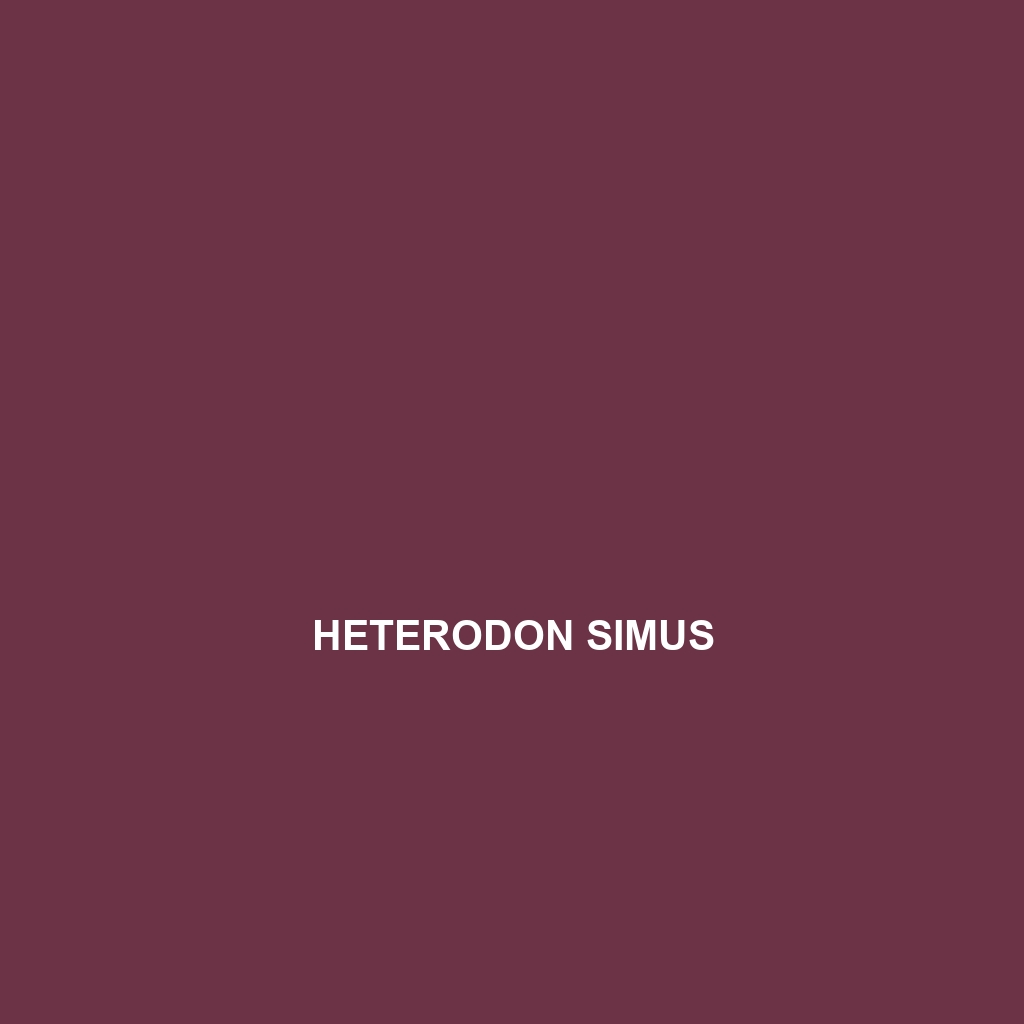Common Name
Heterodon simus
Scientific Name
Heterodon simus
Habitat
Heterodon simus, commonly known as the Eastern Hognose Snake, primarily inhabits a variety of environments across the eastern United States. Found in geographic regions that include parts of southern Canada, the Great Lakes area, and extending south to Florida and west to Texas, its presence is often associated with specific climatic conditions. This species favors temperate forests, savannas, and grasslands, where sandy or loose soils are available for burrowing. The Eastern Hognose thrives in areas with scattered vegetation that provides cover and hunting opportunities, adapting well to both forest edges and open spaces.
Physical Characteristics
The Eastern Hognose Snake averages about 20 to 33 inches (50 to 84 cm) in length, making it a medium-sized species. Its most distinctive feature is its upturned snout, which is used for digging into sandy soils. The coloration of Heterodon simus generally consists of shades of gray, brown, or yellow, adorned with dark blotches that provide camouflage against the forest floor. The underside is usually a lighter hue and can have irregular black markings. One of the intriguing aspects of its appearance is its unique scalation, featuring keeled scales that may offer an additional layer of protection while moving through its habitat.
Behavior
Heterodon simus exhibits a fascinating array of behaviors. Known for its nocturnal behavior, this snake is most active during the cooler parts of the day and often retreats to its burrow or under debris during warmer hours. When threatened, it is well-known for its unique defensive display, which includes playing dead, puffing up its body, and hissing loudly to deter potential predators. This behavior is an effective strategy to avoid confrontation. During mating seasons, which typically occur in late spring, males can often be seen engaging in elaborate courtship displays that include intertwining and wrestling.
Diet
The diet of Heterodon simus consists primarily of toads, although it is classified as an insectivore and will also consume small rodents, lizards, and occasionally small birds. Its specialized physiology allows it to ingest toads effectively, which some other snakes may avoid due to their toxic secretions. When feeding on toads, the Eastern Hognose employs a unique strategy of rolling the toad over to avoid harmful secretions and consumes them from the non-toxic side. This adaptability in its feeding habits highlights its role as an important predator within its ecosystem.
Reproduction
The reproductive cycle of Heterodon simus commences in late spring, coinciding with warmer temperatures that trigger mating behaviors. After a gestation period lasting approximately 6 to 8 weeks, females typically lay between 6 to 20 eggs in sandy soil or under decaying vegetation. The eggs hatch in late summer, and the young snakes emerge at a length of about 6 to 10 inches (15 to 25 cm). Parental care is absent after the eggs are laid, and the juveniles are immediately independent, relying on their instincts to hunt and evade predators.
Conservation Status
As per the latest assessments, Heterodon simus is currently listed as least concern according to the International Union for Conservation of Nature (IUCN). However, habitat loss and degradation due to urban development, agriculture, and land conversion raise concerns regarding its long-term viability. Conservation efforts aim to preserve its habitats and increase awareness about the ecological significance of maintaining biodiversity in ecosystems where the Eastern Hognose resides.
Interesting Facts
One of the most captivating aspects of Heterodon simus is its remarkable ability to mimic the appearance of venomous snakes, utilizing its flattened head and widened neck to create an intimidating posture when threatened. Moreover, this species has been observed exhibiting a unique behavior of burying itself completely in loose soil or sand, making it nearly undetectable in its natural surroundings. This cryptic behavior not only aids in hiding from predators but also helps in thermoregulation.
Role in Ecosystem
Heterodon simus plays a critical ecological role in its habitat. As both predator and prey, this species contributes to regulating populations of toads and small rodents, which can affect ecosystem balance. By consuming various prey items, it aids in controlling insect populations and maintaining the health of vegetation in its habitat. Furthermore, as a prey species, the Eastern Hognose serves as an important food source for larger predators, thus supporting the food web within its ecosystem. Its role as a keystone species emphasizes the importance of preserving not only the Eastern Hognose but the ecosystems in which it thrives.
